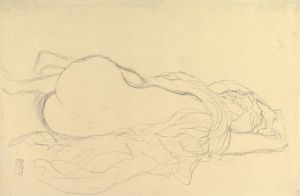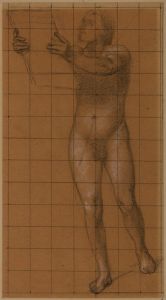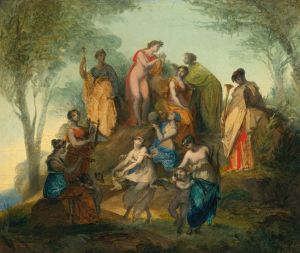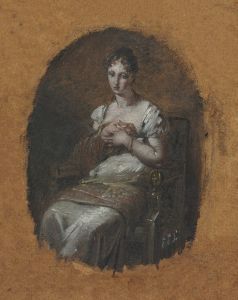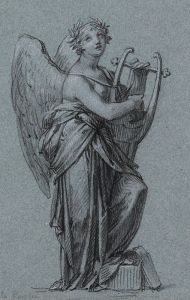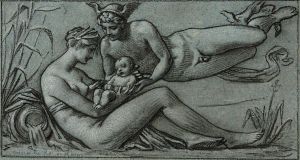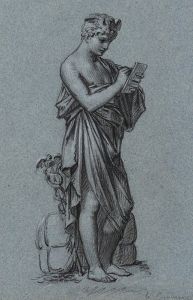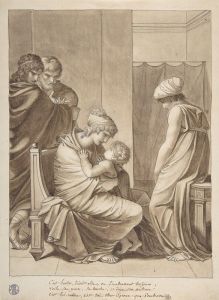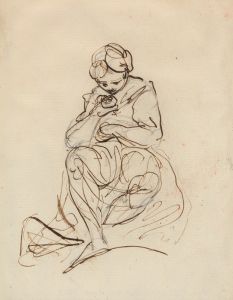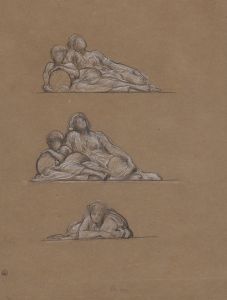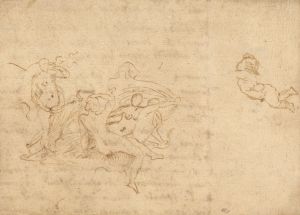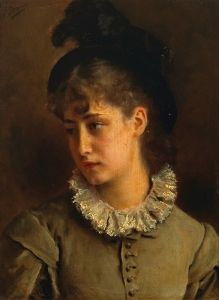
La Victoire
A hand-painted replica of Pierre-Paul Prud'hon’s masterpiece La Victoire, meticulously crafted by professional artists to capture the true essence of the original. Each piece is created with museum-quality canvas and rare mineral pigments, carefully painted by experienced artists with delicate brushstrokes and rich, layered colors to perfectly recreate the texture of the original artwork. Unlike machine-printed reproductions, this hand-painted version brings the painting to life, infused with the artist’s emotions and skill in every stroke. Whether for personal collection or home decoration, it instantly elevates the artistic atmosphere of any space.
Pierre-Paul Prud'hon, a prominent French painter of the late 18th and early 19th centuries, is best known for his allegorical and neoclassical works. One of his notable paintings, La Victoire (translated as Victory), exemplifies his mastery of composition, delicate use of light, and emotive expression. Prud'hon’s style is often associated with a softer, more poetic approach to neoclassicism, distinguishing him from his contemporaries.
La Victoire is an allegorical depiction of Victory, a common theme in European art, particularly during the Napoleonic era. The painting portrays a winged female figure, symbolizing Victory, in a dynamic and graceful pose. She is often shown holding a laurel wreath, a traditional emblem of triumph, and sometimes a palm branch, representing peace. Prud'hon’s rendering of Victory emphasizes elegance and fluidity, with the figure’s drapery flowing in a way that enhances the sense of movement and vitality.
The painting reflects Prud'hon’s ability to blend classical ideals with a sense of romanticism. His use of chiaroscuro—contrasting light and shadow—adds depth and drama to the composition, while the soft contours of the figure create a sense of ethereal beauty. This approach aligns with Prud'hon’s broader artistic philosophy, which sought to evoke emotion and idealism through his works.
La Victoire was likely created during a period when Prud'hon was engaged in producing works that celebrated the achievements of Napoleon Bonaparte. As an artist who received commissions from the Napoleonic court, Prud'hon often depicted themes of power, glory, and virtue. While specific details about the commission or context of La Victoire are not widely documented, it is consistent with the era’s artistic trends, which frequently employed allegorical figures to convey political and cultural messages.
Prud'hon’s work, including La Victoire, has been praised for its unique blend of classical precision and romantic sentiment. His paintings often stand out for their lyrical quality, setting him apart from more rigid neoclassical artists like Jacques-Louis David. Today, Prud'hon’s contributions to art are recognized as significant in bridging the neoclassical and romantic movements.
Further details about the current location or provenance of La Victoire are not readily available in public records. However, Prud'hon’s legacy endures through his influence on subsequent generations of artists and his ability to capture timeless themes with grace and sensitivity.





